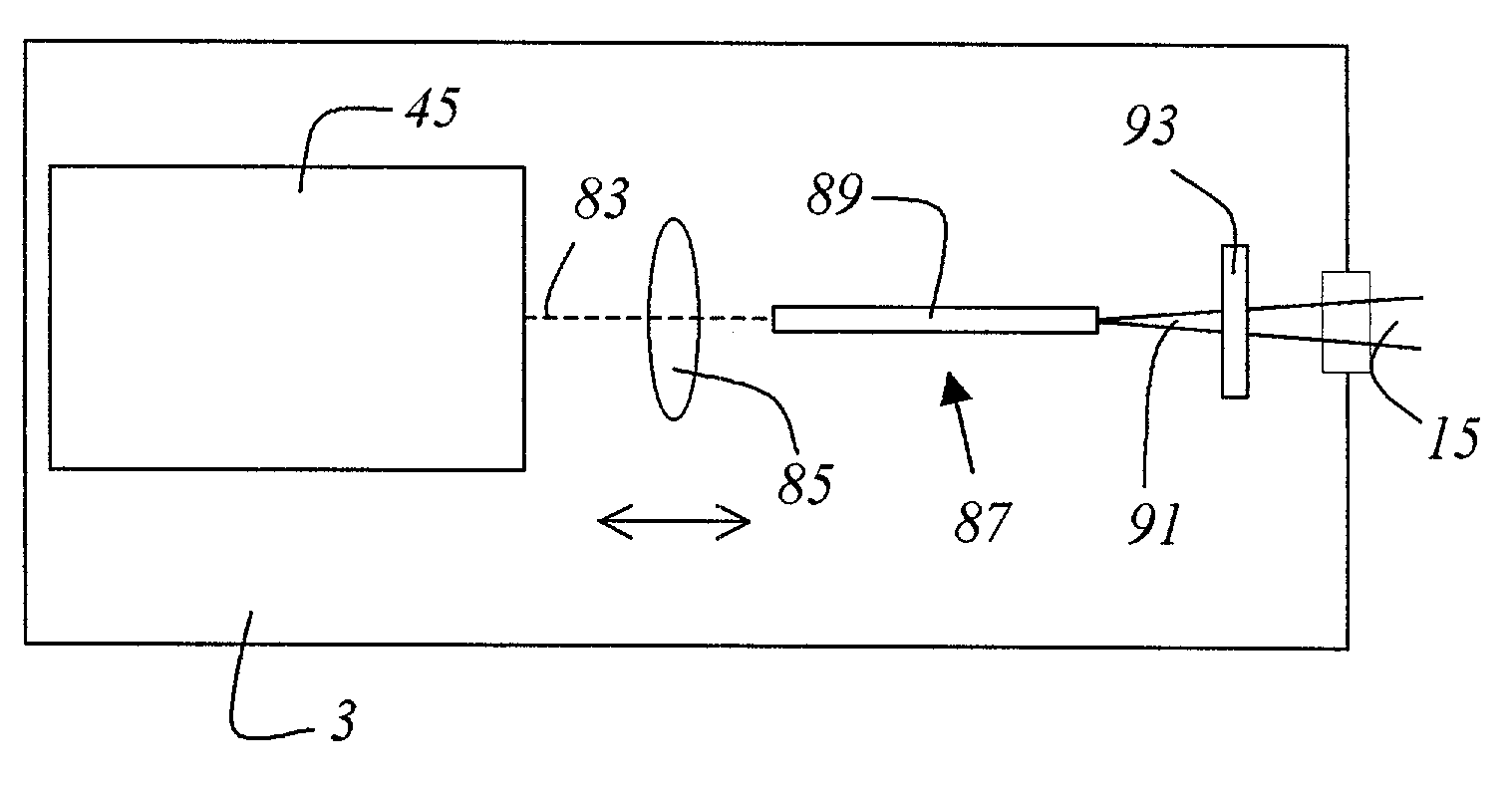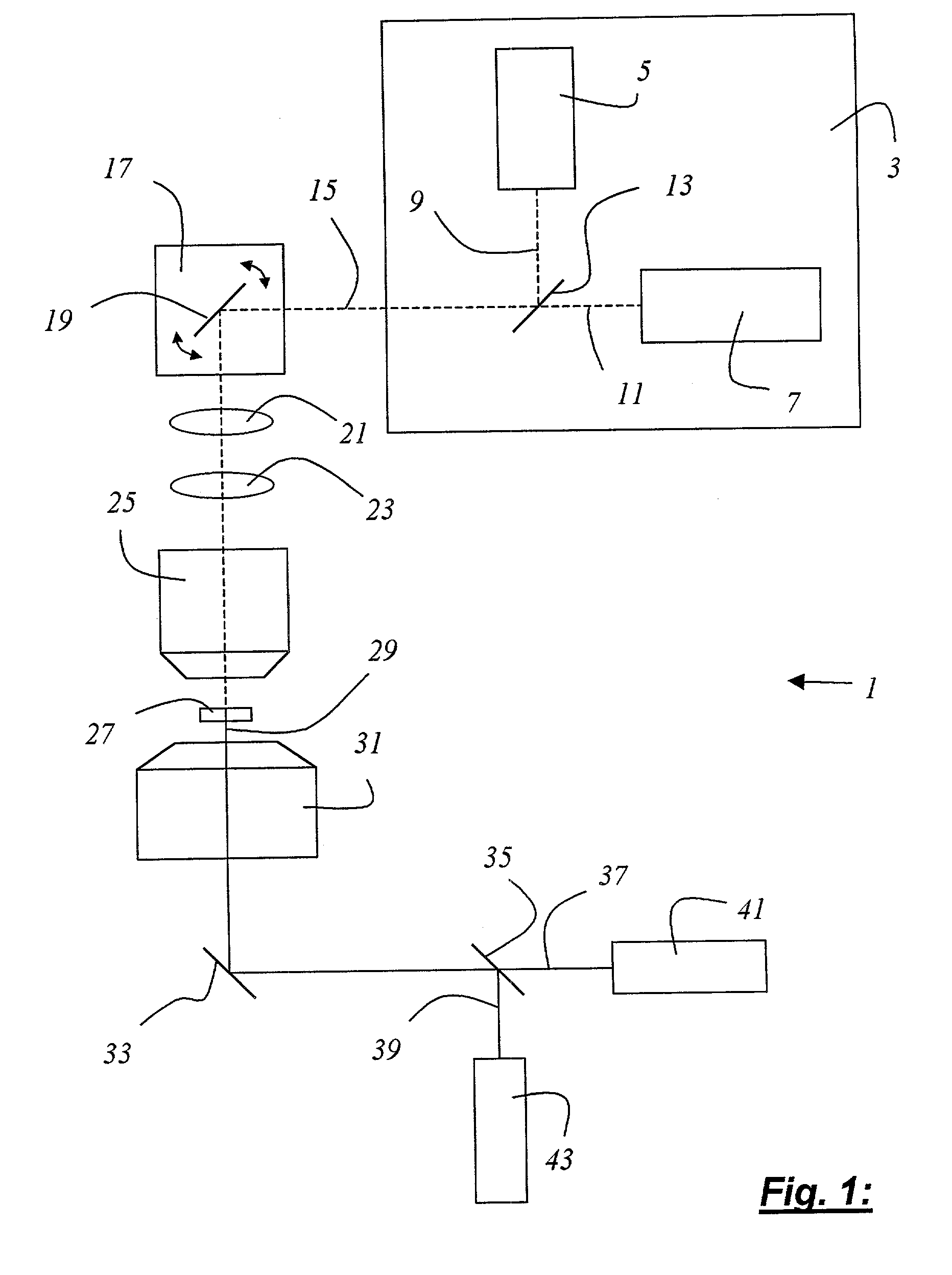Method for examining a specimen, and scanning microscope system
a scanning microscope and specimen technology, applied in the field of specimen examination, can solve the problems of living specimens, cement and lens elements are damaged irreversibly, and the use of ultraviolet illuminating light has the disadvantage, so as to improve the bleaching characteristics, the probability of multi-photon excitation is higher, and the power density is higher.
- Summary
- Abstract
- Description
- Claims
- Application Information
AI Technical Summary
Benefits of technology
Problems solved by technology
Method used
Image
Examples
Embodiment Construction
[0041]FIG. 1 schematically shows a scanning microscope system 1 according to the present invention having a light source 3 that contains a first and second laser 5, 7 embodied as mode-locked titanium / sapphire lasers. Light 9 emitted by first laser 5, which has a wavelength of 780 nm, and light 11 emitted by second laser 7, which has a wavelength of 960 nm, are combined with a dichroic beam splitter 13 into illuminating light 15. Illuminating light 15, shaped into a beam, arrives at a beam deflection device 17 that contains a gimbal-mounted mirror 19. By means of scanning optical system 21, tube optical system 23, and objective 25, illuminating light 15 that has been shaped into a beam is guided over or through specimen 27, which contains two fluorescent dyes that are optically excitable at 390 nm and 480 nm respectively. Detected light 29 proceeding from specimen 27 is collimated by a condenser 31 and reflected by a mirror 33 to a dichroic beam splitter 35 that divides the detected ...
PUM
 Login to View More
Login to View More Abstract
Description
Claims
Application Information
 Login to View More
Login to View More - R&D
- Intellectual Property
- Life Sciences
- Materials
- Tech Scout
- Unparalleled Data Quality
- Higher Quality Content
- 60% Fewer Hallucinations
Browse by: Latest US Patents, China's latest patents, Technical Efficacy Thesaurus, Application Domain, Technology Topic, Popular Technical Reports.
© 2025 PatSnap. All rights reserved.Legal|Privacy policy|Modern Slavery Act Transparency Statement|Sitemap|About US| Contact US: help@patsnap.com



